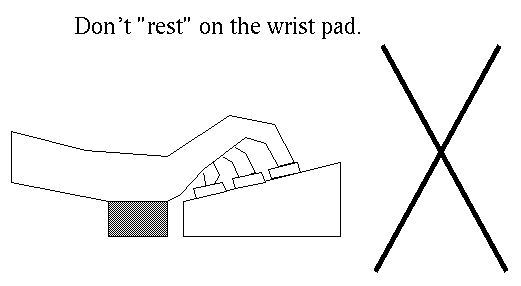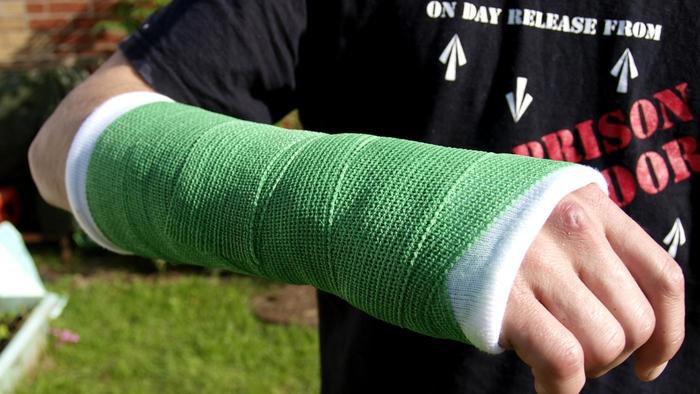- Easiest Way To Break Your Wrist
- How Do You Break Your Wrist At Night
- How Do You Break Your Wrist With No Pain
When it comes to wrist fractures, the playing field isn't level between the sexes. In women, the number of wrist fractures increases at menopause and plateaus after age 65, most likely related to the rapid loss of bone in the years following menopause. Since men don't experience menopause, the incidence of wrist fracture in men remains fairly constant.
The wrist is made up of two bones in the lower arm, the radius, and ulna, plus the small bones of the hand. Most wrist fractures occur outdoors during the winter months when snow and ice make walking treacherous, and falls are common. Often, a person extends an arm to break a fall. The hand and forearm take all the weight and force from the fall, and one of the wrist bones breaks.

PGA Golf Professionals Piers Ward and Andrew Proudman show you a great drill to help improve wrist set in your backswing. SUBSCRIBE to MeAndMyGolf to see more professional golf instructions, tips.
Colles Fracture
Colles fractures occur when the radius breaks within one or two inches of the wrist (the distal radius). Colles fractures (named after the doctor who first described it) occur most frequently in postmenopausal women. The risk for Colles fracture appears to be related to the bone density of the distal radius.
Diagnosis of Wrist Fractures
Following a fall, you may be bruised and sore. Sometimes, a fracture may be misdiagnosed as a bad sprain (an injury to the ligaments). Pain, limited movement, and weak hand grasp in the affected arm is ignored. Your wrist is probably fractured rather than sprained if you have:
- swelling near the wrist
- changes in finger movement
- numbness
Usually, an x-ray can confirm the diagnosis. Once the fracture is diagnosed, appropriate treatment begins.
A wrist fracture may also be a sign of underlying problems such as:
- low bone density
- poor balance
- vision/hearing problems
Treatment for Wrist Fractures
The primary goal of treatment is to return normal movement to the affected hand and wrist. Throughout the healing process, there will be exercises that you must do to preserve movement and flexibility, and re-gain strength.
The appropriate treatment depends on the location and severity of the fracture.
- Simple fracture means that the bone has broken, but the broken edges remain close enough together that simple manipulation re-aligns the involved bone (known as reduction of the fracture).
- Complex fracture means that multiple pieces of bone are broken or that the joint is involved. In this case, a cast alone may be inadequate and surgery may be required.
The first cast or splint will extend above the elbow to restrict movement of both the elbow and wrist. You will be taught exercises for your fingers and shoulder on the affected side. It is important that you perform the exercises, even while in the cast. This will help prevent finger stiffness (one of the side effects of a Colles fracture).
Easiest Way To Break Your Wrist

Over the first two to three weeks, your wrist will be x-rayed weekly. If the bones have slipped out of position, an operation may be needed to reposition the bones and pin them in place. In any case, the cast or splint is removed after 6 or 8 weeks. You can help regain strength and maintain mobility with active and passive exercises for the:
- wrist
- forearm/elbow
- shoulder
After the cast or splint is removed, you may occasionally use a wrist support or splint to support and protect the joint. Sometimes, the wrist may not look exactly the same as it did before the fracture, but with proper physical therapy, little function will be lost.
Initially, you will need assistance with your daily routine. If the break is in your dominant arm, you may need help with tasks, such as dressing, grooming, and bathing.
How Do You Break Your Wrist At Night
The secondary goal of treatment is to determine whether osteoporosis is present. Since wrist fractures occurring in women age 40-60 can be the result of osteoporosis or may be an early warning sign of it, a bone density test would be appropriate. A bone density test measures your current bone health and is the only way to predict your risk of future fractures.
Preventing Wrist Fractures
How Do You Break Your Wrist With No Pain
If you have osteoporosis (or at high risk of developing it) steps must be taken to maintain existing bone density. If your bone density is in the normal range, you should focus on preserving your bone health. Studies have shown that adequate calcium and vitamin D intake and weight-bearing exercises preserve bone density. If the test shows that your bone density is low, calcium, vitamin D, and exercise may not be enough to protect against osteoporosis. You may be prescribed osteoporosis medications to prevent or slow further bone loss.